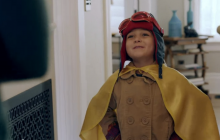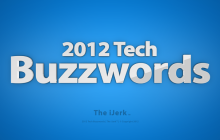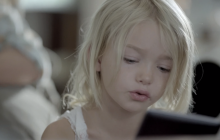Advertisers everywhere have been adapting a marketing approach that appeals to the emotions of the consumer, rather than rational based decision making. This has been going on since before the 1920’s, but companies like Apple and others; have been better at it through the research findings of people like Edward Bernays, Henri Tajfel and other influential marketing, psychology, business, and intellectual minds that sought to understand the consumer’s brain over sixty years ago. Studies by Melany Dempsey and Andrew A. Mitchell, have concluded,
Choice decisions of consumers are not only determined by evaluations of rational information (products attributes) but are also driven by forces that are generally outside of rational control.”
Brands can become hard-wired into your brain through conditioning. (Martin Lindstrom, Buyology)
Secondly, it is a part human nature to want to belong to groups, discriminate against opposing groups, and to develop a relationship with objects (Seth Godin, Tribes). By creating an enemy, and making their customers feel different or better than others; a company can build loyal customers by giving them a social identity (Henri Tajfel). Microsoft is trying to adapt this technique with their latest commercial called, “Bing It On”, by having a public display of blind search result test to see if people unknowingly will choose Bing over Google.
iJerk™ Meter: MEDIUM -Ridiculing another company; “Us vs Them” tactics.
However, I think this ad going in the wrong direction, just like the old Pepsi Taste Challenge research commercials of the past, when brands are presented; they automatically chose Coca-Cola out of loyalty. All of the competitors of Microsoft and Bing try to use the same emotional focus but with some discretion and intelligently imply claims through either the use of personas’ body language or customer/test subject testimonials. For example, using fictitious presentations of Mac vs PC, the former Verizon commercials of the “Can you hear me now” guy, the 1990’s Sprint commercials (before Verizon was even created) where they had a man who would walk around the nation solving people’s cellular static issues by giving them a clear connection phone from Sprint. Heck, even the famous 1984 Apple commercial with the athletic woman throwing a hammer at the brainwashing screen of Big Brother, turning us all into drones. These commercials stood out, they appealed to our emotions.
Bing may be doing more harm by creating more ill will against them, even though their product may warrant more positive media awareness. On the contrary, if people are consistently pleased or displeased with a product/service in their experience, these associations will stick and is extremely difficult to change their minds (Rodger Dooley, Brainfulence).
Why it works: Annoyingly enough, the challenge leads people to go to specific testing website; call to action in the form of a challenge.
Why it doesn’t work: The testing is already tampered with because consciously or subconsciously, the viewers of the commercial may know that Bing is the search result on the right, revealed to them by the test admin on the commercial. The tester can show discrimination in their choices, and most likely are there to prove Bing wrong.
Microsoft’s: “Bing It On” Challenge
Following my “M.E.C.C.A.M.P. Evaluation for TV Commercials that are trying to appeal to human emotions first; logic later”, I’ve noted a few things that stood out in the commercial, which is why I chose to include “Bing It On” in this week’s lineup of commercials for review.
Message - Click to View
Message: Though there may be many small messages within any commercial, I will only consider two, messages that are in a way twofold. “You like Bing, and you don’t even realize it” and “Google, what else do you have up your sleeves because people are starting to notice us more and more as time goes on.”
For the first message, “People chose Bing web search results over Google nearly 2 to 1 in blind comparison test”, according to their study. They need to let people know that other people unknowingly like Bing search results over Google’s and want you to try the test for yourself (Similar to the Pepsi Challenge). Therefore, we can assume “Bing is better than Google”, said the test subject at the end of the commercial. The test administrator in this video thinks that if people realize they are wrong and actually like Bing, that they will change their minds about Bing.
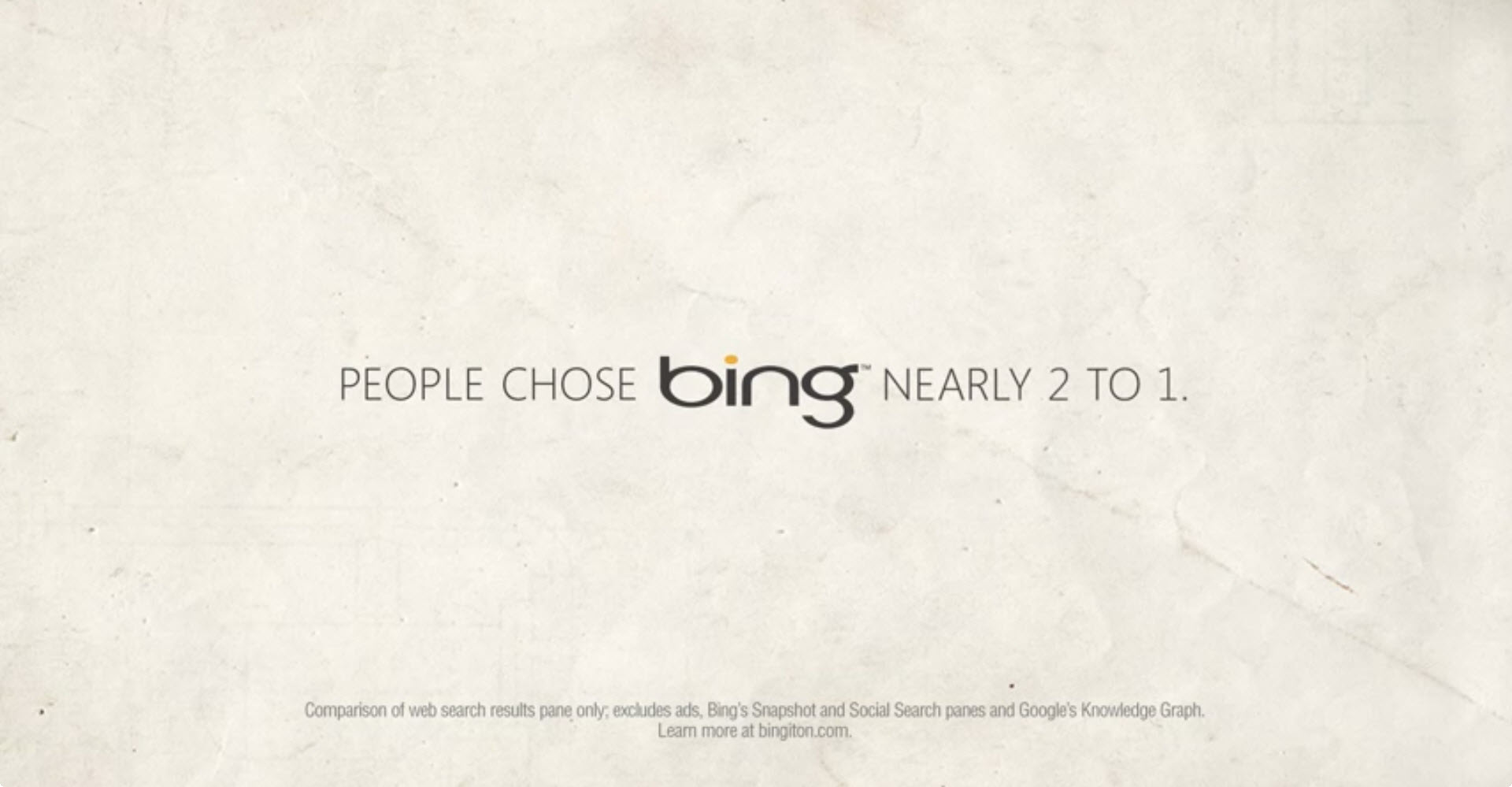
The second message, “Bing It On”, sounds similar to “Bring It On”. I preferred Bing’s message three years ago about “Information overload”, referring to the massive and intimidating irrelevant information one may discover by searching in search engines such as Google and more. Since then, Google has done things to improve and adapted some features from Bing and other search engines in order to countermeasure Bing’s claims. Not only Bing was complaining, but more and more Google users were getting annoyed with some things on Google. I remember having to teach my students on the correct way to search using appropriate keywords in any search engine. However, those commercials were annoying but clicked in consumer’s heads, “I want to get the information I want and move on to doing it. I don’t want to be like those information overlaod people”. By Bing calling Google out again, this time, I’m honestly not sure why besides conventional marketing tactics. However, I will keep an eye on the advancements Google will develop that are similar if not superior to what Bing offers.
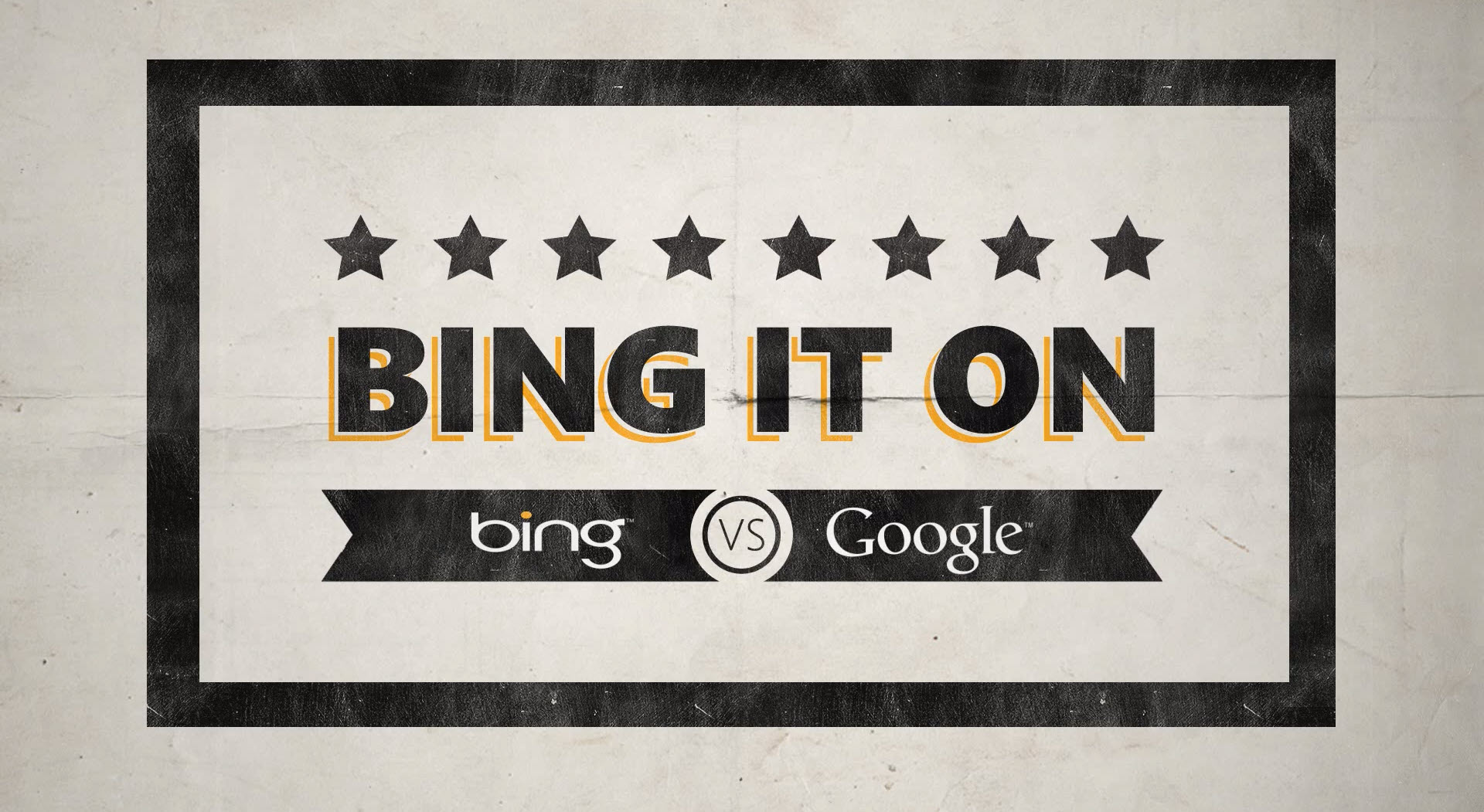
Effects - Click to View
Effects: Minimalistic Infographic styled graphics were used; the title screen displayed the distinction of choice through the fight match design; Bing on the Left and Google on the Right. Before it transitioned to the next scene with a four piece tile flip, a boxing ring bell sounds off.
<strong>Color</strong> - Click to View
Color: Classic Bing colors, black, orange and white; the same as Halloween colors. However, instead of Black usually dominating as a background color when Bing’s white and orange logo is displayed, they are using a fairly off-white color for the background with black as the font and orange as accent coloring. This creates a more accessible and nonthreatening appeal to consumers. The color from the environment looked a bit dreary dreary, even though the sunlight was shining that day. The clothing on people was at most, dark with a bit of secondary and tertiary colors; which created a mellow yet close to dismal tones when added to the backdrop of their city.
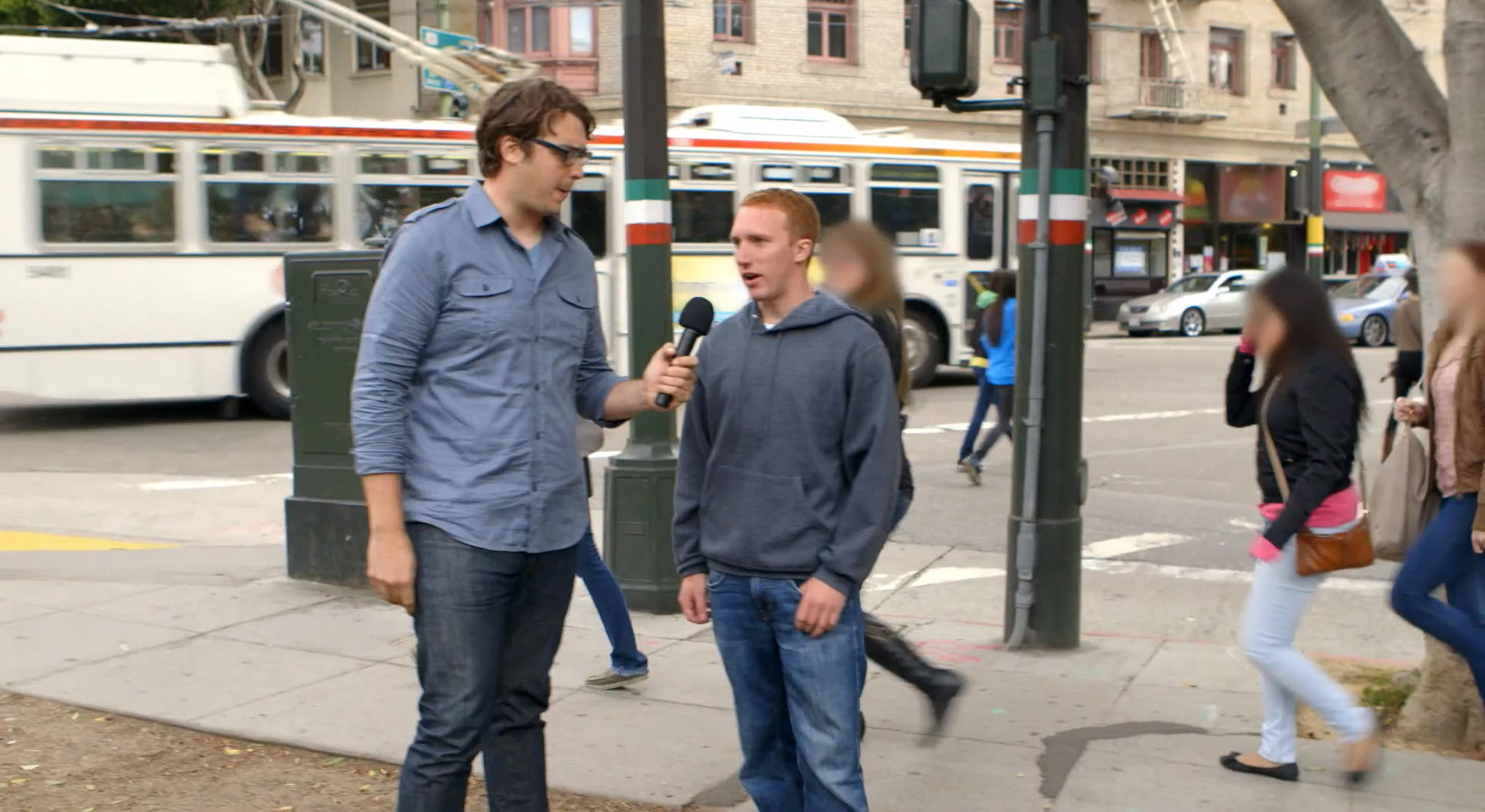
Composition - Click to View
Composition: I felt the over all the composition was sufficient. I think it would have been helpful to have shown more screen shots of actual searches and search results, so that viewers watching the commercial could feel more like they were there. Perhaps focusing more on the reaction on the faces of the test subjects, once again, viewers could have empathized more with the test subjects. In doing so, it would made it more about the people and their experience, than Bing or the test administrator being like, “I told you so!”
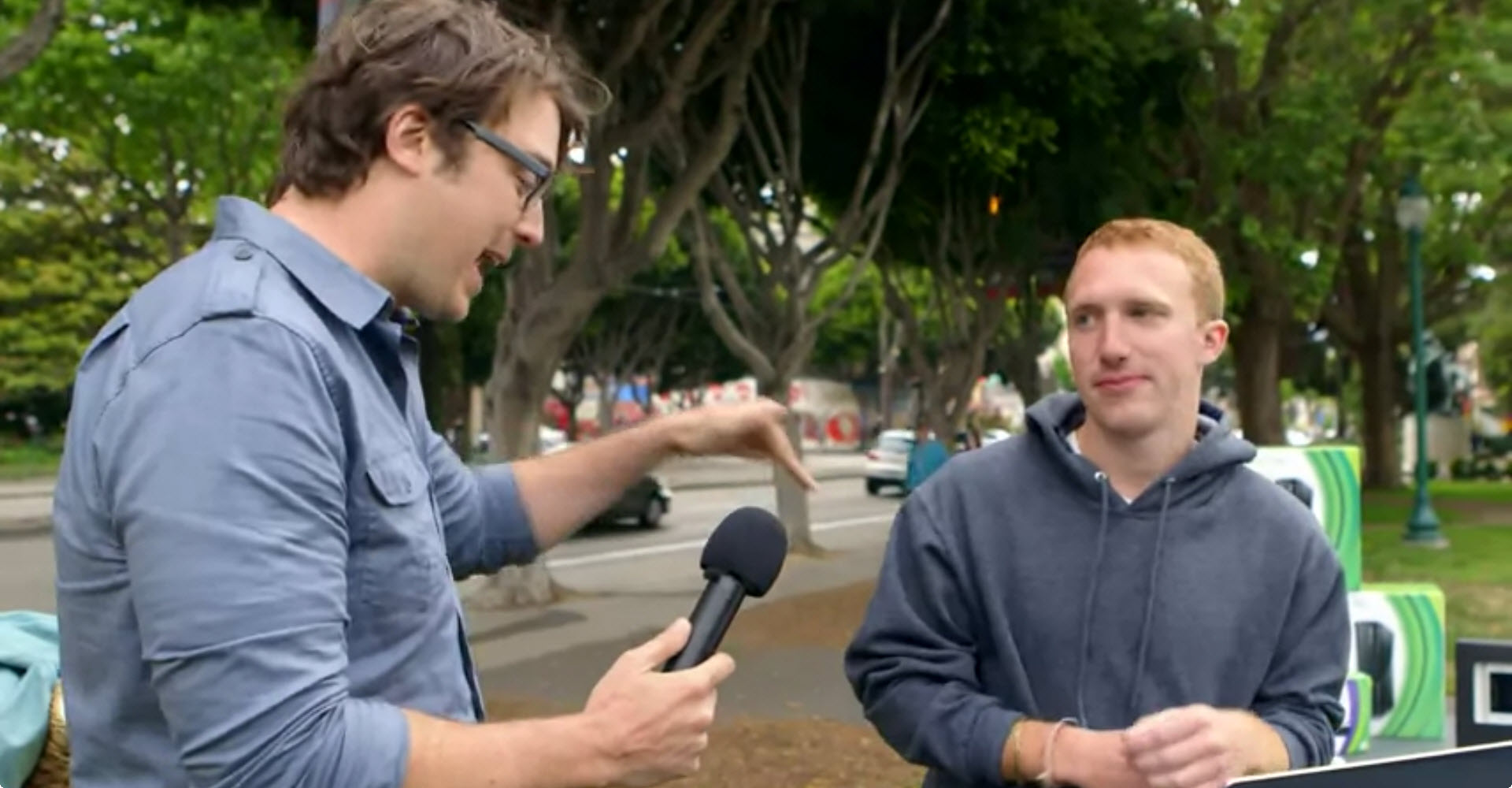
The locations ranged from a pleasant cityscape backdrop to bustling looking streets as people and cars were passing by. I was a bit distracted by the background movement, which created a lively feel to the testing environment.
Audio - Click to View
Audio: The tone of the test administrator’s voice is an appropriate level for his environment, over enthusiastic tones, but a bit annoying. He seems to enjoy when people are proved wrong.
He stops people on the street and asks, “What’s your preferred search engine?” There are a few cut scenes where it shows people saying, “Google” with uncertainty or confidence. Yet, we can hear it being repeated over, and when they are proven wrong, they are told they chose Bing.
The test administrator’s passion seems to be in contrast to the mellow and or shocked test takers once they realize that they realized that they liked Bing’s search results more.
Background noise was a bit distracting; I believe they were in some busy places in order to increase the chance of test subjects.
Manipulation - Click to View
Manipulation: For the title screen, Bing is on the Left, Google is on the Right. So naturally, a test taker would take the blind test, and perhaps conclude that the sides are already defined; through visual cues, they have an idea of what they think looks best by knowing what side the search engines are on. I guess this was not only a hierarchy purpose in writing, but a necessary way to change things up, the way a dealer may shuffle cards. So someone who likes Google, may assume that Google results will be on the right. While taking the test if they like Google, they may be more inclined to choose the right side (mentioned in the introductory paragraphs above; Dempsey and Mitchell).
Pressure from an authoritative figure. He is tall, a bit heavy set and seems friendly enough. Yet he entices them to take the test, and when they are wrong, playfully rejoices in their shock. He aggressively entices them into taking the test by saying things such as, “Okay, what if I were to tell you that I bet you an Xbox 360, that you would pick Bing over Google. If we do a side by side, blind test comparison and you choose Google, you get an Xbox. But if you pick Bing, which means that I’m right, and I get to have your sweat shirt. Why don’t you look up a new place where you can go get a new sweater?” (Tool Tip: A search type that Bing would be stronger at since they are touted as the ‘Decision Engine’)
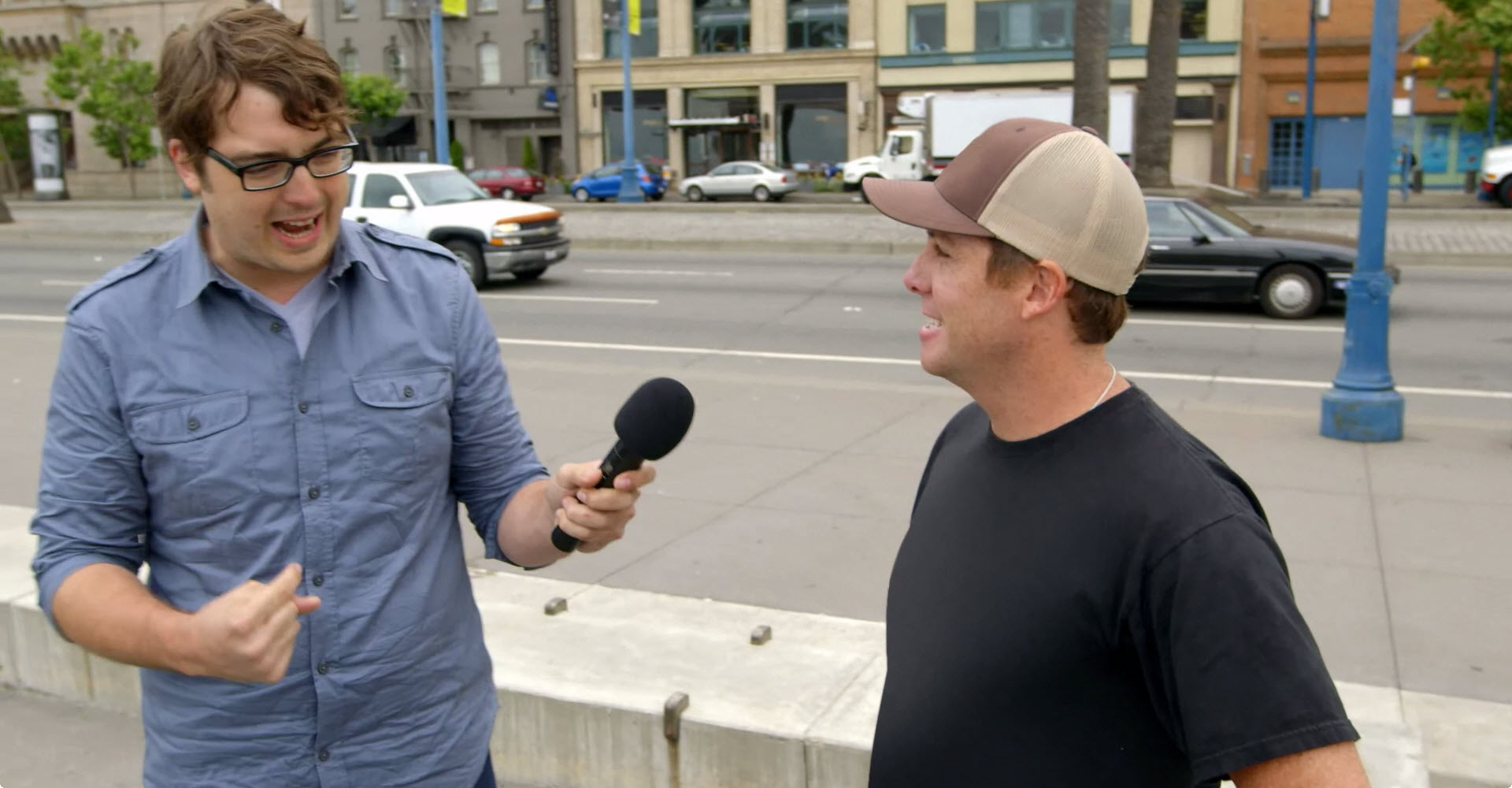
Word of mouth from consumers. At the end, of the commercial, one of the test takers says to everyone in ear shot with her megaphone, “Bing is Better than Google!” So, the people at home watching this commercial and those walking by can hear it from what we are supposed to believe is an real test taker. Two things can happen here on out, word will spread that Bing is actually better, or people will begin to dislike Bing’s approach overall.
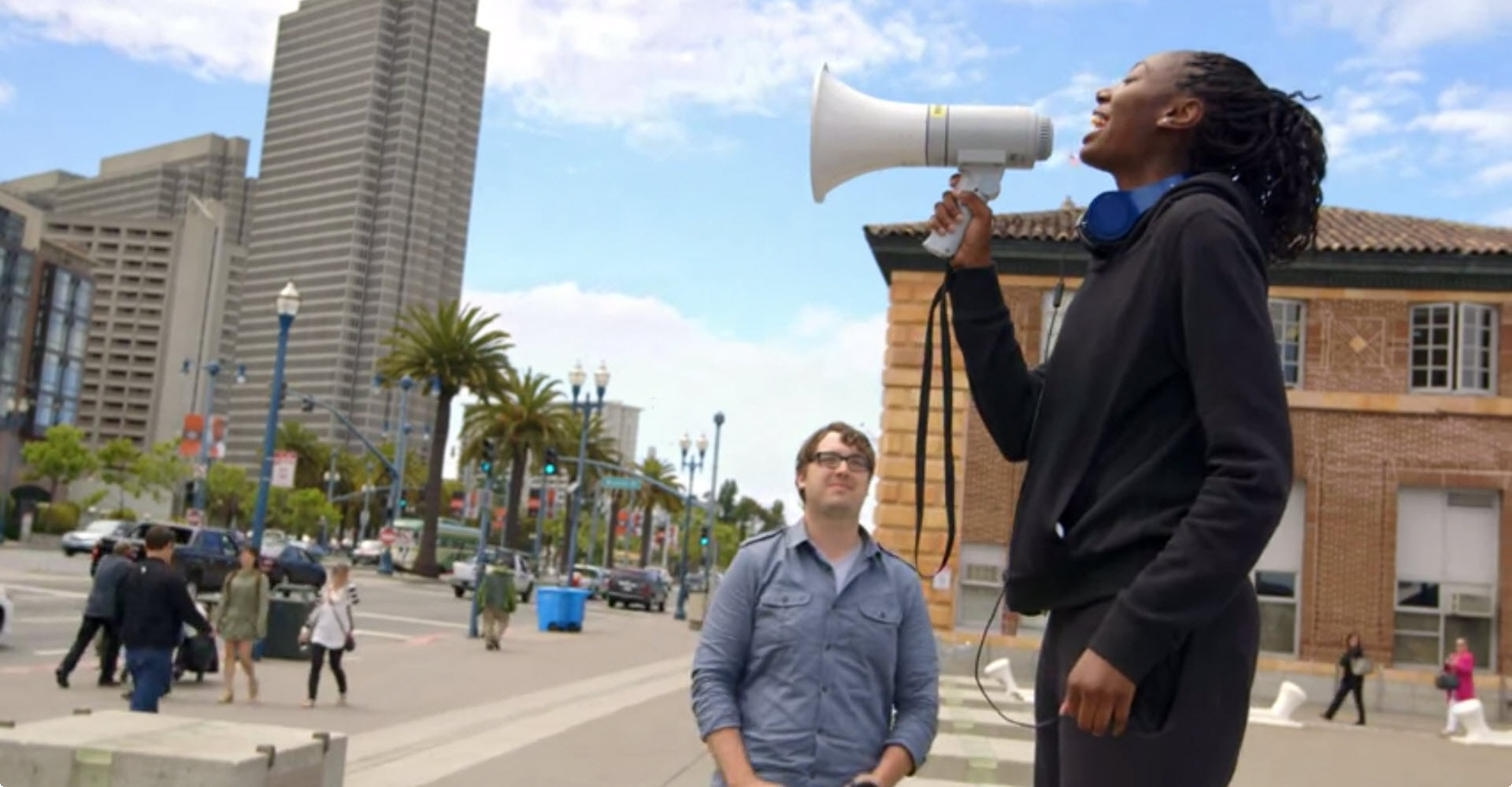
I recorded my own experiences with the ‘Bing It On Challenge’ website that you can view (here). The website was exceptionally well designed, and fun to take the test. It did not feel like a chore, so in a way, this commercial did work on some level. Either you want to prove Bing wrong, Prove Bing right, or you just want to see what will happen.
Persona - Click to View
Persona: Excited host who is overly optimistic, a possible nerd or hipster-like mid 30’s male, tall with dark features. The commercial begins with him saying as he points to corporate buildings behind him, “Hey, we’re in San Francisco, Google’s back yard for the ‘Bing It On’ Challenge.”
I do miss the annoying “Cure for Search Engine Overload” commercials in 2009. Since then it has not only attracted more people to Bing, but made other search engines revisit and improve how search results are displayed best for the customer. The message was then clear, “Bing and decide”, as opposed to being bombarded by search results that may be unrelated to you. Most people do not know how to correctly search to achieve precise and more refined results. So should people learn how to search better? Or should search engines refine their algorithms and other variables to cater more to the consumer.
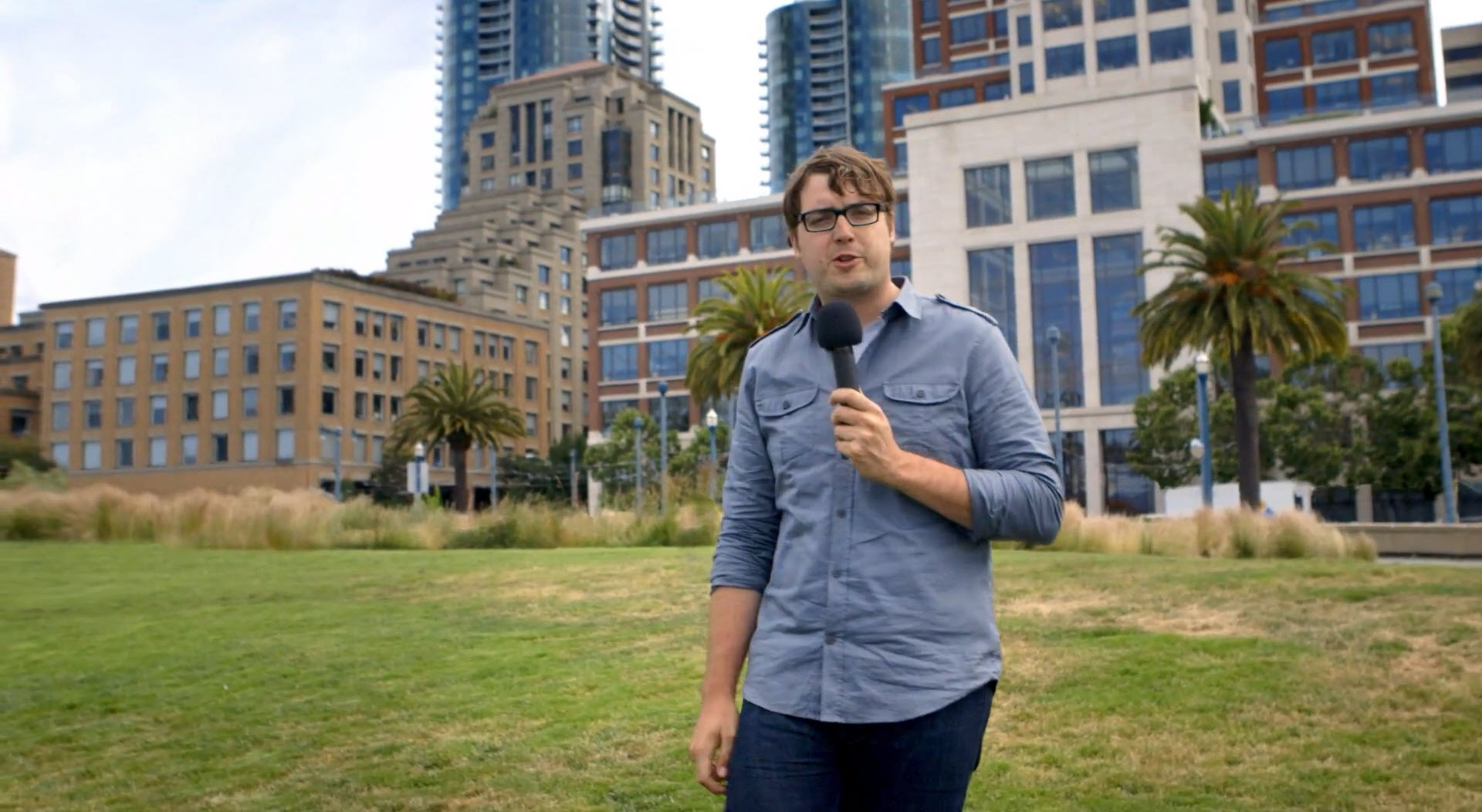
Conclusion:
While I use both Google and Bing for my own search reasons, Google remains the top search engine, while Bing sits with anticipation at number 2; right above Yahoo (Top Search Engines). I took the Bing commercial up on their offer (website) and not only saw how I may have had preconceived notions, but how others could be too. There were ways that the results could be altered to favor either Google or Bing from the company side and from the test taker side. The power of suggestion is a pretty fascinating topic to learn when it comes to understanding the human brain and body language. I don’t think the two should be compared in general at all. However, this is marketing, it’s generally outside of rational though, but emotion based. Most people thrive on contrast, discrimination when it comes to brands and other things in life; I believe it is to fill some void within. Either way, it is a part of what makes us human. The more we know about ourselves, our strengths and weaknesses, the better we can ensure our survival has the human race.


